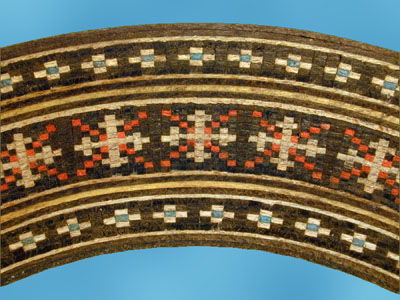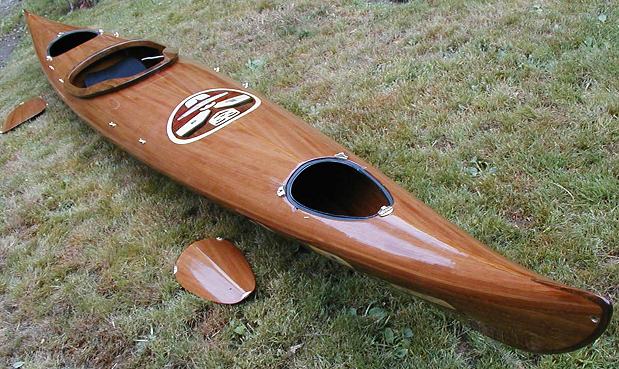 |
| rosette |
 |
Bowl by Jim Sprinkle includes copper metal with choice hardwoods |
 |
| Kayak by Jürgen Köppen, binding on the ends |
 |
| rosette |
 |
Bowl by Jim Sprinkle includes copper metal with choice hardwoods |
 |
| Kayak by Jürgen Köppen, binding on the ends |
The Goals of Slöjd Education:
To instill a taste for and an appreciation of work in general.
To create a respect for hard, honest, physical labor.
To develop independence and self-reliance.
To provide training in the habits of order, accuracy, cleanliness and neatness.
To train the eye to see accurately and to appreciate the sense of beauty in form.
To develop a sense of touch and to give general dexterity to the hand.
To inculcate the habits of attention, industry, perseverance and patience.
To promote the development of the body's physical powers.
To acquire dexterity in the use of tools.
To execute precise work and to produce useful products.
Otto Salomon, 1900
 Source: http://playbuildmake.blogspot.com/2009/09/educational-sloyd-naas-sweden.html
Source: http://playbuildmake.blogspot.com/2009/09/educational-sloyd-naas-sweden.html





Aside from terrorists, everyone loves boats. It is no surprise, then, that they represent one of the oldest modes of transportation known to date. Excavated remains in the 7,000-10,000 year old range, along with circumstantial evidence associated with the settlement of Australia and Crete (40,000 and 130,000 years, respectively), suggest that we have been nautically inclined for a good portion of our history as a species. If aliens came to Earth any earlier than the Mesolithic period, and brought advanced vehicles with them, they cleaned up after themselves fairly well. Until such evidence becomes apparent, we shall have to stick with boats. Over the centuries there have been myriad types and construction methods, each adapted to unique needs and resources, though for this entry it seems best to focus on a few types that seem particularly relevant to my own work. I have a soft spot for ancient fabrication technologies, and this is something of a wood-oriented course, so newfangled composite materials and ultra-modern construction methods have no place here.
The oldest floating stock were most likely plain logs. Eventually our early ancestors seemed to realize that by making adjustments to the shape of a large piece of wood, they could achieve increased maneuverability, greater stability and ample space for themselves and their belongings. These dugout boats, known for their durability and ease of construction, have been used throughout history (continuing to this day in many parts of the world). Production is fairly simple. After acquiring a log or tree trunk of suitable dimensions, shipwrights cut the exteriors to shape with the tools at their disposal (stone and bone, followed later on by metal). Though the keeled, pointed bow and stern configuration is common, changes were often made to the design based on intended use (those navigating shallower, calmer waters often opted for flat-bottomed designs with an asymmetrical plan). Once the exterior was shaped to specification, the interior would generally be hollowed out by notching (cutting a series of parallel grooves across the span of the hull, then chipping out material between the notches until the desired depth and profile are achieved), or by a controlled fire (in which coals are placed onto the surface of the wood until sufficient material is removed, leaving burnt wood to be removed by an adze or similar tool). Once a rough shape was attained, the interior would generally be dressed out using smaller hand tools. Once smoothed and shaped, boats were ready to be used, though outfitting was often required based on use (sea-going vessels were often fitted with sails and/or outriggers for increased stability and efficient propulsion on longer voyages).
Where the available wood was of insufficient size for dugout construction, it became necessary to use other production methods. In parts of the world, framed boats with bark (in the Americas) or stretched hide (among the Inuit of the Arctic, Bering and North Atlantic regions) hulls became common. In the ancient Near East, however, planked construction (in which planks of wood are – often, though not exclusively - attached to a timber frame for shape and structure) set what would become the standard of shipbuilding for centuries to come. In 2000, an expedition uncovered what turned out to be the oldest known planked vessels at Abydos (Upper Egypt). A fleet of 14 ships were discovered in brick graves previously thought to be architectural walls. Though much of the hulls had deteriorated, their shape was luckily preserved by the excrement of wood-eating insects, who left behind a perfect copy of the structure in their wake. Analysis of the remains determined that planks were fastened together using mortise-and-tenon joints, then sealed with reed bundles (the remains of which were found at the site). A later variation on this method, using a free tenon instead of one left attached to a plank, became the standard in the Mediterranean (though the Egyptians were never known as much of a sea-faring people). Interestingly, these boats (associated with an early dynasty) seem to have been built from the outside in and without any internal framing, which accounts for the warping seen when taken out of the water. Based on their location and orientation (facing the Nile, and roughly a mile from a set of royal tombs), these boats are thought by archaeologists to have been meant for the Pharaoh's use in the afterlife, and stand out for their ritual significance as much as for their striking construction.
You might be wondering what work I might be imagining that involves ancient boat construction, particularly dugouts and Egyptian funerary vessels. I shall leave it to this: it involves a Coptic monk, a shark-man, the apocalypse and a coyote. This has been a good semester.





References:
Adams, Jonathan. "Ships and Boats as Archaeological Source Material." World Archaeology 33,
3 (February, 2001): 292-310. Accessed December 11, 2011.
http://www.jstor.org.libaccess.sjlibrary.org/stable/827924
Vinson, Steve. "Ships in the Mediterranean." The Biblical Archaeologist 53, 1 (March, 1990):
13-18. Accessed December 11, 2011.
http://www.jstor.org.libaccess.sjlibrary.org/stable/124440
Waterbolk, H.T. "Archaeology in the Netherlands: Delta Archaeology." World Archaeology 13, 2
(October, 1981): 240-254. Accessed December 11, 2011.
http://www.jstor.org.libaccess.sjlibrary.org/stable/124440

So upon browsing laminate wood artI came across this interesting image. It looked like dirty water, but a closer look revealed wood. To add to it, the medium is a recycled material, found local to the city he is from,
His installations occupy the entire room and almost seem as if the room itself is some creature or is being transformed. There isn’t much about his process, other than he laminates and bends the wooden pieces. But his work evokes movement, fire, destruction.

Using old plywood fences to convey this amazes me. Repetition through from and similar color is something I can appreciate. Like brushstrokes upon a canvas, he uses an entire space. Scale is definitely large, but I feel miniatures could just be cool as well.

I guess the point that I’m getting to, to relate to the blog is the Recycled Lumbar aspect. Obviously wood is not some thing that man can make over night and use. But finding and using wood that can be re-used for further building, art making, or whatever, is a plus. I don’t know how many more trees there are in the world, or if our consumption of wood greater than it is being grown (which my guess is) but to me a tree is a precious thing. I mean if there’s enough to go around then by all means. But I’m sure this resource is a limited one. And by making good use of the processed and reclaimed material is an awesome idea. Why not make sweet art?

